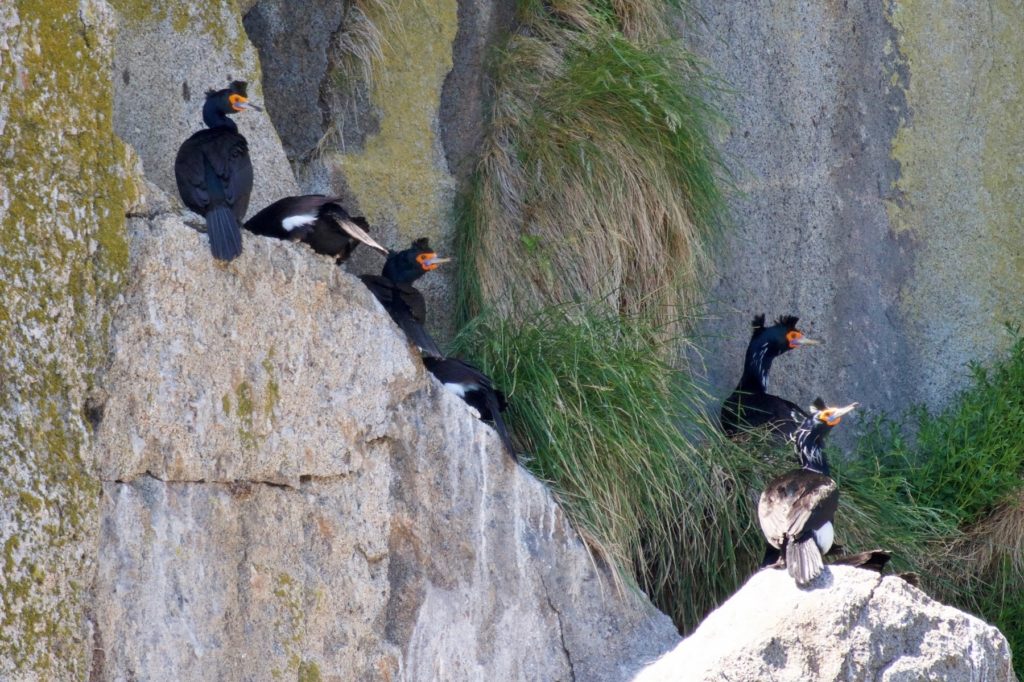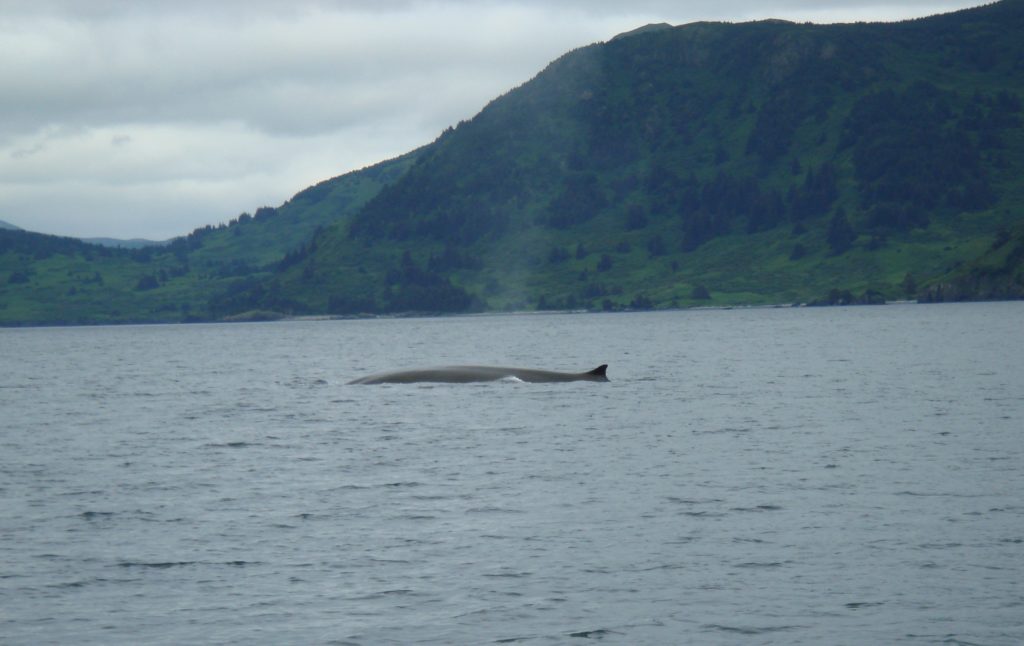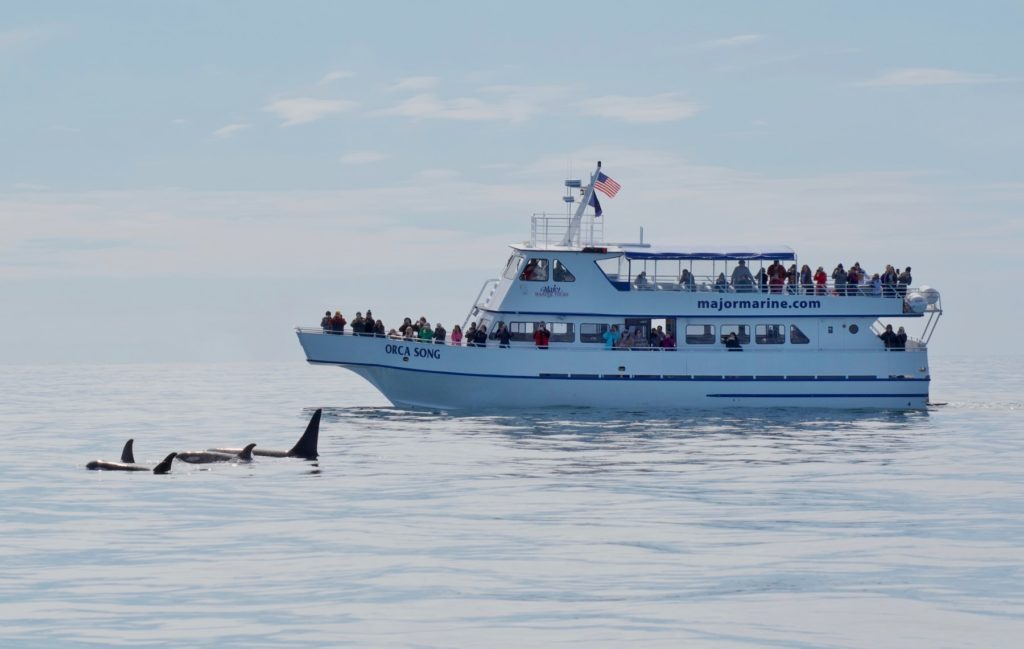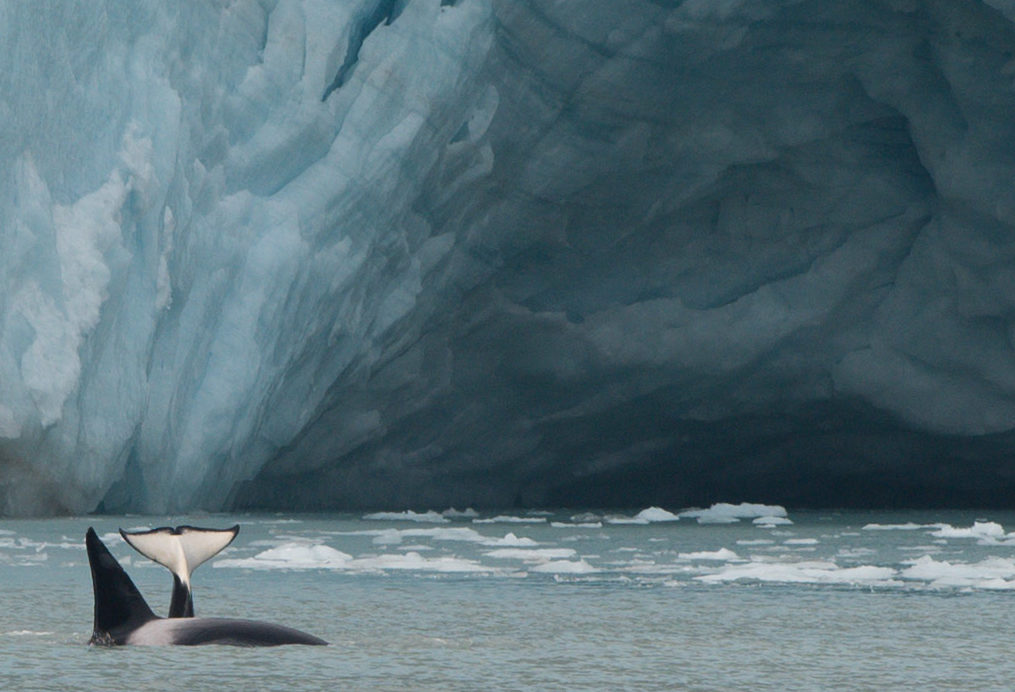The leaves are changing, the snow is returning, and the whales are migrating. These are the visual reminders that the season is coming to an end. At this time last year, we were raving about how we had the best orca season any of our captains had ever experienced. Going into the 2019 season, we anticipated another strong orca year, but we couldn’t have fathomed just how many orcas we would actually end up encountering in Kenai Fjords throughout the entire season. Orcas were the clear highlight of the year, but we also had uncharacteristically warm weather and calm seas, the inaugural Seabird Festival in Seward, and more fin whales sightings than usual.
This June, we participated in the first annual Seward Seabird Festival. Kenai Fjords National Park and Resurrection Bay are home to dozens of different species of seabirds, some of which bring people from all over the world to see. Festival attendees were able to see rare birds such as red-faced cormorants, puffins, oystercatchers, rhinoceros auklets, pigeon guillemots, and many other species of seabirds that spend their summers in the Seward area. Next year we hope to grow the festival and have another successful Seabird Festival Cruise.

Last season, we noticed that the humpback whales began their migration earlier than normal. This year, the humpbacks arrived at their normal time in May and were frequently viewed in May and June. We viewed them less frequently during the second half of the season, and they migrated earlier than normal again. Our captains have a lot of theories about why this is happening. Alaska experienced an extremely warm summer, with record breaking temperatures and high ocean temperatures. This could have contributed to the humpbacks staying further out in the open ocean to feed. We did get to witness bubble-net feeding on one day of the season. This behavior occurs when a group of humpback whales dive down deep and blow bubbles out their blowholes while swimming in a spiral on the way back up. This pushes the school of fish to the surface, where the whales will lunge out of the water and gulp up large mouthfuls of food. Though our sightings did decrease from last season, we did see humpbacks on about 70% of our Kenai Fjords National Park Cruises during peak season, which was down from about 80% in 2018.
While humpback whale sightings were lower than normal, we did have an increase in sightings of fin whales, which are the second largest whale behind the blue whale. Typically we see fin whales only a handful of times a season when we cross the Gulf of Alaska from Resurrection Bay into Aialik Bay. On our full-day cruises this season we saw fin whales on over 20 trips.

The weather this season brought positives and negatives to Alaska. The seas were very calm in the open Gulf of Alaska until about the end of August. The warm weather made for comfortable cruises, but it also caused wildfires to grow and smoke to be a major issue on the Kenai Peninsula and all over Alaska. Captain John said that “it was the calmest seas and warmest weather in 7 years of driving.” Higher temperatures also cause glaciers to recede faster, so we are hoping for a heavy snowfall this winter.

Now to the stars of the show this season: killer whales. Looking back to our cruises just 5 years ago, seeing orcas throughout the entire season was a rare treat. The excitement for seeing orcas is still as strong as ever, and for the past couple of seasons we have seen orcas far more often. We have gone from seeing orcas on roughly 40% of our full-day cruises 5 years ago to seeing them on 80% of our 8.5 Hour Northwestern Fjord Cruises and 91% on our Orcas Quest Cruises in 2019. Not only are we seeing them in abundance during peak summer, but we are also witnessing amazing superpods, transient hunts, offshore orcas, and pods we have never seen before.
On several trips this year, we were treated to superpods of 40+ orcas. Superpods can occur when different families of killer whales join together to socialize and breed. Another superpod that we saw more than once this year were the offshore orcas. Offshores are a minimally-studied and very elusive species of killer whales that primarily feed on sharks in open ocean. While we normally see them in the fjords once every few years, we saw them in the area this year in abundance, with over 50+ animals in the pod. One of the most breathtaking encounters this season was seeing the AT1 pod hunting harbor seals up against Aialik and Northwestern Glaciers. It’s truly a National Geographic moment when you see the large black dorsal fin breaking the water’s surface right in front of a massive tidewater glacier. The AT1 pod, or the Chugach Transients, are a well-known pod in Alaska. They were one of the pods that swam right through the Exxon Valdez Oil Spill in 1989 and have not been able to produce offspring since. They are a beloved group, and we had several encounters in which we witnessed them successfully hunting Dall’s porpoise and harbor seals. Learn more about this group in our blog post.

To see more photos of our widllife encounters this season, including lots of amazing orca photos and videos, visit our Facebook page and follow us on Instagram.
As our seasonal deckhands head to warmer climates and we take the boats out of the water, we already begin to think of what 2020 will have in store for us. Will we get another amazing humpback season like we had in 2016? Will we see even more killer whales? How will the glaciers look after a long Alaskan winter? Stay tuned.
Signup for our newsletter to get the most recent Major Marine updates.